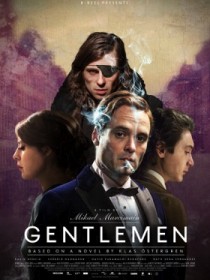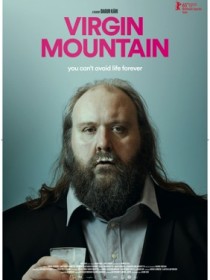


Amy Berg: Janis: Little Girl Blue
Nearly two hours in company of Janis Joplin, what’s not to like! I was so ready to just lean back and enjoy and I was… disappointed.
Whoa, slow down, hold your horses! I’m being bombarded with talking heads at a speed so I can’t follow. Too fast a pace when all I want to do is to take my time, hear the music, feel the music and the person I’m about to discover.
I’m disappointed because I’m sitting in the dark theatre all alert and ready to take in impressions, emotions, sound, images and Music and I’m not getting the cinematic experience I thought I would. And I’m annoyed because I think a big part of my disappointment is a question of the editing. I don’t mind a conventional portrait film, I don’t mind seeing a TV-documentary in a theatre, but I do mind the rushing.
All the information, all the anecdotes and the archive footage lose sense if I don’t get the time it takes to “meet” the performer and her music. If there is not a moment where I hear something I haven’t heard before, suddenly discover the lyrics of a well-known song or just get to linger on a live performance…
Having said that, award-winning American filmmaker Amy Berg (the Oscar-nominated Deliver Us from Evil, 2006, about child molestation within the Catholic Church) has made an impressively well-documented portrait of Janis Joplin. It has been a long-term project initiated by the Joplin estate who approached the director back in 2007 and behind the film lays a huge amount of work with archive research, funding and clearing rights.
Part of Berg’s take on telling the story is a voice-over (the voice of another southern singer/musician Chan Marshall, known as Cat Power) reading Janis’ letters to her family and lovers. Dear family, she wrote continuously throughout the years, giving news to the Texan middle-class nuclear family she came from (the family letters was originally used by Joplins sister Laura in her book Love, Janis from 1992, later turned into a theatre play and a Broadway show). Joplins two younger siblings (Laura and Michael Joplin who manage their sisters estate), old friends, band mates and fellow musicians are looking back. The portrait seems less depressive and dramatic than I thought it would be, and I like that. Lots of life, fun, love and friendships, the story of a strong young woman who at 17, to her own big surprise, discovers she can sing and from then on the rise to fame, but also the beginning of a heroin and alcohol addiction that ends up causing her sudden death.
Just as with Scorsese’s Dylan portrait No Direction Home, Berg owes some of Janis’ finest moments to D. A. Pennebaker. Not only with the strong scenes from his legendary concert film Monterey Pop (1968, filmed by Pennebaker, Leacock and Maysles, probably the most musical trio in film history), the film that sparked off Joplin’s route to stardom (Pennebaker is there himself to reveal how close Joplin was to not be in his movie!), but also with his footage of Joplin and the band Big Brother and the Holding Company in the recording studio and at concerts (material that Pennebaker and Hegedus have used in their short Joplin-film Comin’ Home from 1991, I now find out from the credits). The recently released Festival Express (2003) by Frank Cvitanovich and Bob Smeaton, documenting the 1970 tour by train through Canada gathering Joplin, Grateful Dead and The Band, is another invaluable source.
The press material states that no one had ever explored Janis Joplin’s story on film. A quick search and I discover that Howard Alk (The Black Panther film The Murder of Fred Hampton, 1971, and editor on Dylan’s Renaldo and Clara) made the portrait Janis: The Way She was in 1974. I have to see that! I assume that old time conflicts between the estate and Alk must be the reason that the film is not quoted even though important and mostly unique scenes from it are reused in Berg’s portrait. I have promptly ordered the Howard Alk DVD, maybe a second Janis Joplin portrait film review will be coming up soon…
I found Janis: Little Girl Blue to be out of rhythm, which is no good when we’re talking about Joplin. But please do go see for yourself, you might not agree with me…
Janis: Little Girl Blue (2015, 103 min.) Production: Disarming Films and Jigsaw Productions. Danish distribution: Camera Film in collaboration with CPH:DOX Premiering in Danish theatres all over the country October 22nd. I DAG!


